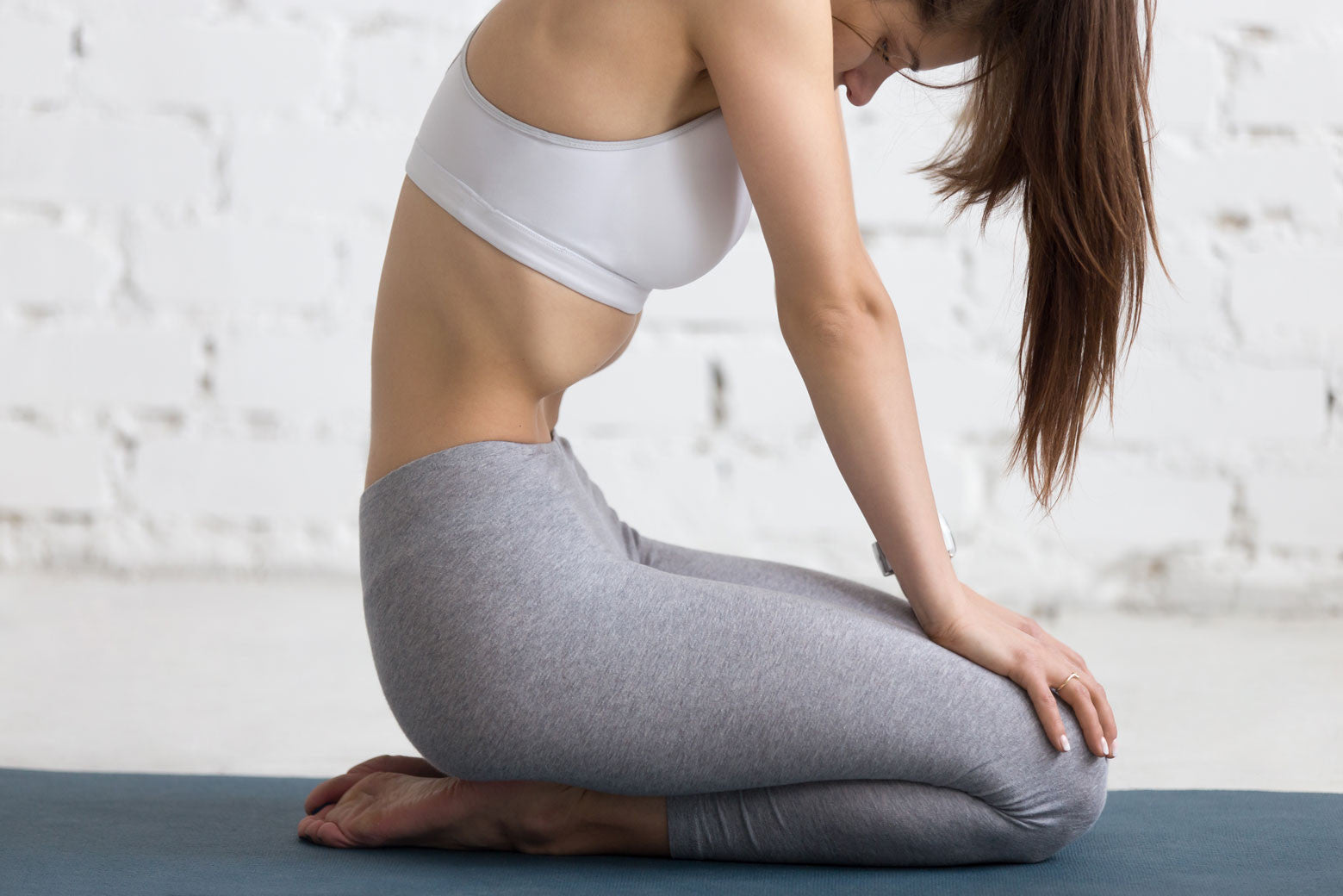How to Get Really, REALLY Strong Abs: Develop Yogic Under-Armor

by: Jill Miller
Abs are a hot topic — always. Core-strengthening videos and equipment are the number one biggest-selling item in the fitness category year after year. They run the gamut, from core-based exercise genres like Pilates to midnight infomercial Ab machines.
The insatiable market for our “navel gazing” has spurred new science and research about the muscles of the core and spine, and much of the new findings steer us away from the six-pack and towards a more holistic view of the core. Core-conscious pioneers like Dr. Stuart McGill and his “abdominal bracing” methods have helped to evolve core conscientiousness to the next level. His powerful studies suggest we need to involve more trunk muscles to strengthen the core and protect our spines.
Core controversy
Yet still, there seems to be a missing link in all this core commotion. One of the deepest under-armor muscles of the core is often left out of the conversation: the diaphragm. Yogic practices revere this muscle because of its governance over our breath.
More than a decade ago, I was featured in a Yoga Journal Magazine article entitled “Forget 6-Pack Abs.” The article introduced the concept that abdominals need to be flexible in order to be strong and that the breathing muscles, especially the abdominal diaphragm, were a major part of core stability and mobility. Author Fernando Pages Ruiz mentioned the seldom-pictured yogic abdominal arts of Uddihyana Bandha (diaphragm stretch) and Nauli Kriya (lateral abdominal churning). Happily for me, my diaphragm and abdomen absolutely loved practicing these internal abdominal moves and I landed my first modeling gig!
The images were so startling and bizarre that one reader wrote a letter to the editor the following month claiming that the magazine must have digitally altered my core, as the images seemed “strikingly unrealistic.” The magazine made a statement that the images were not digitally enhanced, and my gracious teacher at the time, Ana Forrest (who dazzles with her internal abdominal abilities), also wrote in to “defend” the authenticity of my abdominals.
Core confusion
When viewing Nauli or Uddihyana Bandha for the first time, the mind is totally confused by the seeming “disappearance” of the “normal appearance” of the core. Typically we see the shape of the outside of the body, and these under armor practices illuminate the feelings, motions, and activations of the inside. They require the ability to control the abdominal diaphragm not only as a breathing muscle, but also as a structural muscle of the body. No easy feat!
Breathing affects the shape and tone of the core because the diaphragm is directly adhered to many abdominal muscles and its organs. When breathing in deeply, the diaphragm contracts and the abdominal muscles and visceral contents balloon out. When breathing out, the diaphragm relaxes and stretches back up toward the lungs, and the gut balloon deflates. Typically we are unaware of this process, as breath is an automatic function in the body. But we also have the ability to consciously control the breath and to create breathing patterns that impact the nervous system and the structural health of the under-armor — this innermost abdominal layer. Mobilizing and awakening the abdominal diaphragm is vital because it is so central to the whole body. The majority of the dome-shaped muscle attaches to the lower six ribs like a giant internal parachute. Its bottom strands attach to the front of the low-back spine and the psoas and quadratus lumborum muscles (spinal stabilizers). The top of the diaphragm is literally a seat for the sack of connective tissue around the heart.
Core commitment
Carefully crafted diaphragm work is not nearly as well known as other core-centric models. But when skillfully applied to work along with the abdominal and spinal muscles that Dr. McGill and others champion, the core is phenomenally integrated. These yogic practices help us to find the internal connections between the diaphragm and all of the muscles of the core, an important consideration when trying to rehabilitate the spine. Develop the stretch, strength and continuities of the diaphragm to its full potential and your core will be more powerful than ever!
Go on an archaeological dig beyond the 6-pack to find and locate your own under-armor and innermost abdominal diaphragm. Feel for yourself how much more interconnected you become to your own core.
Yogic under-armor: Uddihyana Bandha in 3 easy steps
- Begin in Ardha Savasana (half-corpse pose) with both feet planted on the floor about 18 inches away from the buttocks. Raise the arms overhead as you slowly inhale pulling the spine off the floor, bone by bone. The inhale ends when the hips are lifted as high as possible and the back of the arms contact the floor.
- Remain here during an explosive rapid exhalation, keep the lungs vacant of any breath whatsoever, and release any abdominal tension. Leave the arms resting overhead on the ground, and slowly lower the spine back down into Ardha Savasana, allowing the plunger-like suction to form at the base of the lungs as the diaphragm is drawn towards its vacuum. Uddihyana Bandha forms quite naturally without any strain.
- Once the pelvis touches down, the arms quickly reset themselves to Step #1, and a new cycle of inhalation begins.
- For more “under-armor” explorations, check out my classic Core Integration video. Or come to any of my Yoga Tune Up® Core workshops and I’ll help in person!
Also in Blog

Body Peace & Personal Empowerment

Yoga for Swimmers: Poses for Strength and Mobility

